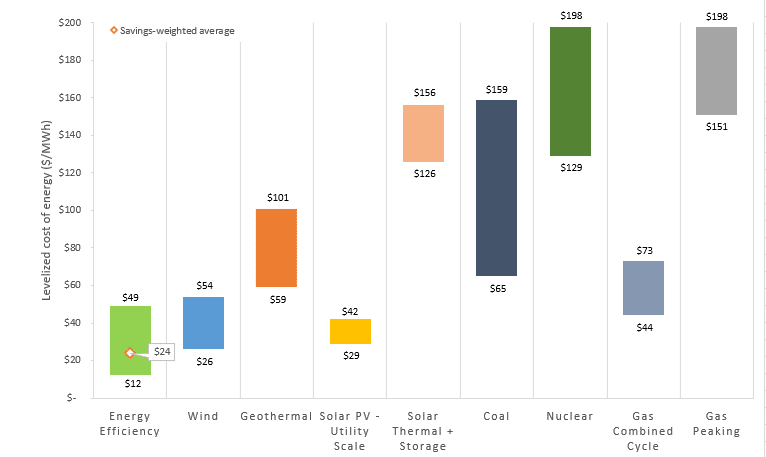It’s official: There is absolutely no time to waste, and our mission is clear.
Whether or not you were surprised by the key findings from the recently released Working Group 1 contribution to the Sixth Assessment Report of the Intergovernmental Panel on Climate Change, this version is the most direct yet in stating findings that warming is human-induced and will reach or exceed 1.5 C sooner than initially expected.
It is the most urgent call to action to reduce greenhouse gas emissions yet to limit further warming:
“Global warming of 1.5°C and 2°C will be exceeded during the 21st century unless deep reductions in CO2 and other greenhouse gas emissions occur in the coming decades.”
If there is any silver lining to be mined from the report, it is that we have many of the tools at hand today that are needed to meet this challenge and that individuals, cities, states and countries are ramping up actions to reduce emissions. Two notable trends are 1) state legislation setting aggressive targets for 80-100% renewable energy within the next 10 to 20 years and 2) policy promoting electrification of fossil-fueled end uses (space and water heating, cooking, and transportation).
While both of these major energy policy developments are rightfully gaining a lot of attention, we possess one fundamental tool that doesn’t get as much attention but is absolutely critical to our ability to reducing emissions. Without it, neither renewables targets nor electrification policies will be as successful as quickly as we need them to be. The true unsung hero of this climate crisis: energy efficiency.
Using energy efficiency first is integral to meeting the goals described above, for a variety of reasons:
1. Energy efficiency lowers utility system costs.
Although renewable generation costs continue to decline, the figure below from ACEEE shows that a vast quantity of energy efficiency is lower-cost than generation options. Adding energy efficiency directly reduces the amount of utility investment needed to generate and deliver energy, which keeps costs low for customers. Any utility strategy to reduce emissions should first focus on finding all the cost-effective energy efficiency opportunities in the system before investing in new generation to meet remaining load.

2. Energy efficiency creates space on the electric utility system for beneficial electrification (BE).
Electrification is considered beneficial when end uses that were directly powered by fossil fuels – furnaces, water heaters, cars — are electrified to reduce costs as well as greenhouse gas emissions. A key third piece of the BE formula is the impact on the power grid, and implementing energy efficiency first helps lessen the need for new generation to be added to the system to serve the new load, thereby improving the business case for electrification. Additional electricity savings result from installing the efficient electric option.
3. Energy efficiency resets and reshapes the baseline energy use in homes and buildings, enabling all distributed energy resources (DERs) to operate more effectively.
As we think of the suite of DER options more and more as if they were one orchestra, working together to efficiently match demand with supply, we understand the value in combining strengths of each DER to keep system costs low.
A well-insulated home is better able to retain comfortable temperatures for longer periods of time. As a result, it can provide more value to demand response programs and can have greater impact in shifting loads off the peak hours of the day.
A home with high-efficiency equipment and a tight building envelope requires less energy to heat and cool and can more easily achieve net zero energy with fewer solar panels, for example. Without achieving that efficient starting point, the need for more generation and larger storage capacity increases costs for homeowners.
The presence of continued efficiency helps all other resources shine as the combination of DERs becomes not about one or the other, but about how they work together.
4. Energy efficiency embodies good stewardship and improves our health and the health of our environment.
The effects of climate change have shown the importance of preserving our natural resources. Energy efficiency is all about minimizing environmental impact and waste by using less energy to achieve the same level of comfort and productivity. Efficiency requires no transmission or distribution system upgrades and produces no line losses (even less waste).
A well-insulated home with efficient ventilation and proper moisture control is not only easier to heat and cool, as described above, but will also have better indoor air quality – likely to be reflected in improved health of those who live there. Outdoor air quality benefits from lower emissions can also be quantified as a societal value of efficiency.
5. Energy efficiency is the most accessible resource — to all customers and to policymakers at all levels of government.
Everyone has access to some form of energy efficiency. Whether it’s information on low- or no-cost energy efficiency actions we can all practice in our homes, or utility program incentives and tax credits to help lower the first cost of a replacement water heater, every resident can take steps to lower their energy bill. There is widespread recognition that more work is needed in designing more equitable access to energy programs, but efficiency can work for everyone.
Policy makers at all levels of government can infuse energy efficiency into local practice. Individuals don’t have to wait for new government policies, cities don’t have to wait for state action, and states don’t have to wait for federal action.
With so many clear reasons to prioritize energy efficiency, these are the questions we should be asking:
- Have we designed this policy so that it incentivizes EE first?
- Can we require consideration of EE prior to incentives for other DERs?
- Have we considered all the benefits of EE along with the costs?
As we embrace new aggressive policies to lower emissions as soon as we can, it’s all hands on deck with efficiency leading the way.
